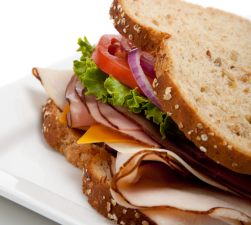Industry Trends: Refrigerated 3/25/2016
Walk the perimeter of a grocery store and new brands, products and trends are constantly popping up. The way the manufacturer markets and packages these items, as well as the retailer’s merchandising strategies can leave an ever-lasting impact on the success of these products.
Below are just some of the trends that are sweeping the dairy, deli, meat and prepared foods categories as well as information about the state of the industry.
State of the Dairy Industry at Retail:
- The dairy industry is performing at a medium growth rate and is heavily tied to effective operations, marketing and government controls. *Hoovers 2016
- Worldwide dairy product sales total about $500 billion, according to Global Industry Analysts. *Hoovers 2016
- Industry Consolidation — Many dairy product manufacturers have grown rapidly over the last several years by purchasing local dairies and creating more efficient production and distribution systems. *Hoovers 2016
- Increased Demand for Cheese — Cheese production in the US continues to rise. US manufacturers produce about 11.5 billion pounds of cheese each year. The average American consumes more than 35 pounds of cheese per year — an increase of more than 20% in the last two decades. *Hoovers 2016
- Cultured Products — Cultured dairy products, like yogurt, specifically Greek yogurts have become a value-added trendy food, rather than a commodity. The segment has revived its dollar and volume sales due to innovative packaging, promotion, processing and ingredients. However, Greek yogurt volume sales increased a mere 4.4% in the first 11 months of 2015, as compared to the same time frame in 2014. This is nothing compared to the multi-year, double-digit growths experienced just five years ago. *IRI
- Private Label Gains Popularity - Sales of private-label groceries are projected to grow 62% to $133 billion in 2016, up from $83 billion in 2008, according to a Packaged Facts survey. *BusinessInsider.com Dairy manufacturers are jumping on this private label opportunity because they mainly produce commodity products. This means that they can readily supply grocers with private-label items, which provide a dependable volume of business. *Hoovers 2016
- Organic Products — Organic dairy product revenue is now one of the fastest-growing segments of the organic food industry. Organic dairy products are more expensive to produce, but command higher retail prices. Many consumers are willing to pay a premium for organic foods, making the segment a very profitable part of the industry. *Hoovers 2016
State of the Meat / Deli Industries at Retail:
- Revenue (in current dollars) for US meat products manufacturing is forecast to grow at an annual compounded rate of 3% between 2016 and 2020, based on changes in physical volume and unit prices. *Hoovers 2016
- The consumer price index for food, an indicator of meat product values, rose 0.9% in February 2016 compared to the same month in 2015. *Hoovers 2016
- US retail sales for food and beverage stores, a potential measure of meat product demand, increased 2.7% in the first two months of 2016 compared to the same period in 2015. *Hoovers 2016
- Deli pre-sliced meat made up 12.7 percent of deli meat sales in the United States in 2015. *Statista 2016
- U.S. retailers are going to concentrate on enhancing deli operation areas such as the sandwich segment and rotisserie programs in 2015; as revealed by a recent survey. *ATKearney
Meat / Deli Trends and Challenges:
- Meat Branding — Differences in meat quality have allowed packers to create branded products, such as Angus beef, for which some consumers are willing to pay a premium. *Hoovers 2016
- Popularity of Bison Meat - Bison meat has gained popularity due to its relative lack of hormones as well as its low fat content. *Hoovers 2016
- Case-Ready Products — Improved communication and distribution networks make it possible for packers and processors to cut, package, price, and label fresh meat products for immediate display on supermarket shelves. By eliminating the meat-cutting and -packaging operations at local supermarkets, producing case-ready products cuts costs and reduces the likelihood of bacterial contamination. *Hoovers 2016
State of the Prepared Foods Industry
- Revenue (in current dollars) for US fresh prepared foods producers is forecast to grow at an annual compounded rate of 4% between 2016 and 2020, based on changes in physical volume and unit prices. *Hoovers 2016
- In terms of total dollars per store/week, the most important subcategory within prepared foods was prepared chicken with weekly retail sales of 4,033 U.S. dollars per store. *Statista
- The number of fast food purchases made at retail outlets per customer in the March 2015 through June 2015 period is over six visits higher than those made to QSRs in an average 4-week period, although traditional quick service restaurants still hold the bulk (76 percent) of quick service visits. * NPD
Prepared Foods Trends and Challenges
Many retailers are blurring the line between grocery store and restaurant by offering a cafeteria or buffet format with an array of specialty stations where consumers can purchase prepared foods. But according to a report release by ATKearney this model is not applicable and not always successful for all retailers. According to ATKearney, the key to achieving differentiation and growth in the prpared foods category is to develop a product mix and merchandising strategy that is focused on freshness, healthfulness, and value, and to build a supply chain with the right economics. *ATKearney
Upcoming ECRM Efficient Program Planning Sessions (EPPS):
Meet with major category players during one-on-one meetings during the upcoming EPPS events.
- Frozen, Refrigerated & In-store Bakery EPPS: August 21-23, 2016 at the Sheraton San Diego Hotel & Marina in San Diego, CA
- Natural, Organic & Specialty Foods EPPS: August 22-25, 2016 at the Sheraton San Diego Hotel & Marina in San Diego, CA
Other Content Gateway Articles that May Interest You:

